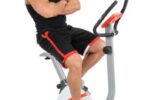As we age, staying active and maintaining a healthy lifestyle becomes even more crucial. High-Intensity Interval Training (HIIT) has emerged as a popular and effective way to achieve fitness goals, and the good news is, HIIT workouts for elderly are not only possible but also incredibly beneficial.
This blog aims to dispel the myth that HIIT is solely for the young and vigorous. We’ll explore the benefits of HIIT for seniors, modifications to ensure safety and effectiveness, and provide sample HIIT workout for elderly routines that you can perform at home or outdoors.
Why HIIT Workouts for Elderly are Great.
HIIT involves alternating between short bursts of high-intensity exercise with periods of rest or low-intensity activity. This creates a metabolic boost, helping you burn more calories in a shorter time compared to traditional workouts.

Here’s why HIIT can be a great addition to your fitness routine as a senior:
- Improved cardiovascular health: HIIT elevates your heart rate, strengthening your heart and improving blood circulation.
- Increased muscle strength and bone density: Regular HIIT workouts for elderly can help build and maintain muscle mass, which is crucial for preventing falls and promoting bone health.
- Enhanced balance and coordination: HIIT exercises often involve quick movements and changes in direction, improving your balance and reducing the risk of falls.
- Boosted cognitive function: Studies suggest that HIIT can improve cognitive function and memory in older adults.
- Increased energy levels: The short bursts of activity followed by rest periods can leave you feeling energized and revitalized.
Making HIIT Work for You: Essential Modifications
While HIIT offers numerous benefits, it’s important to listen to your body and make modifications to suit your individual needs and fitness level. Here are some key points to remember:
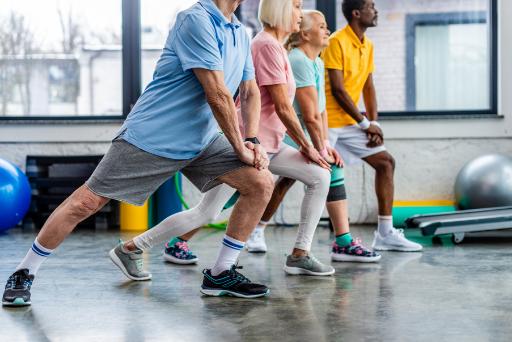
- Start slow and gradually increase intensity: Don’t jump into intense workouts right away. Begin with low-impact exercises and gradually increase the intensity as your fitness level improves.
- Listen to your body: It’s okay to modify exercises or take longer rest periods whenever needed. Don’t push yourself to the point of pain or exhaustion.
- Focus on proper form: Maintaining good form during exercises is crucial to prevent injuries. Don’t hesitate to adjust movements or seek guidance from a certified instructor if unsure.
- Warm-up and cool-down are essential: Always include a proper warm-up before starting your HIIT workout and a cool-down routine afterwards.
- Consult your doctor before starting any new exercise program: This is especially important if you have any underlying health conditions.
Sample HIIT Workouts for Elderly
Here are two designed sample HIIT workouts for elderly , focusing on low-impact exercises and easy modifications:
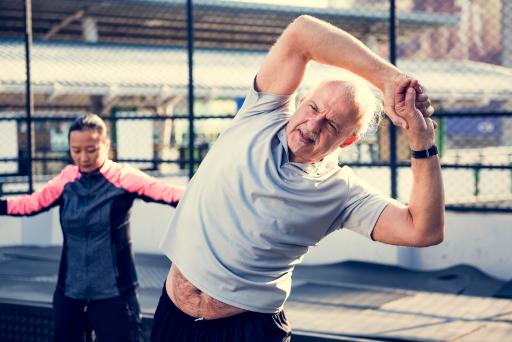
Workout 1: Home-based HIIT
Warm-up (5 minutes):
- Gentle arm circles (forward and backwards)
- Leg swings (forward and backwards)
- Marching in place
Workout (20 minutes):
- Squats with chair support (30 seconds): Stand in front of a sturdy chair, lower yourself as if sitting, and use the chair for support when standing up. Repeat for 30 seconds.
- Rest (15 seconds)
- Arm raises (30 seconds): Stand with arms at your sides. Raise your arms overhead for 30 seconds. You can use light weights if comfortable.
- Rest (15 seconds)
- Walking lunges (30 seconds per leg): Step forward with one leg, lowering your body until both knees are bent at 90-degree angles. Push off with your front foot to return to standing and repeat with the other leg. Do this for 30 seconds per leg.
- Rest (15 seconds)
- Marching in place with high knees (30 seconds): March in place, bringing your knees as high as comfortable towards your chest. Repeat for 30 seconds.
- Rest (15 seconds)
- Repeat the entire circuit 2-3 times.
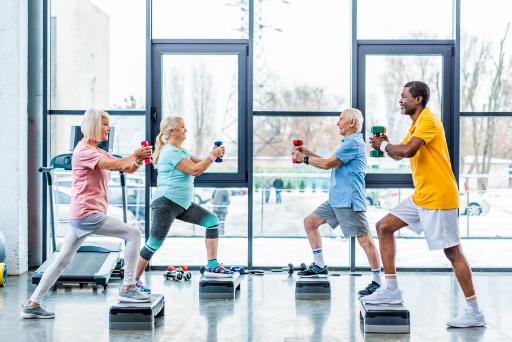
Cool-down (5 minutes):
- Gentle stretches for major muscle groups
Workout 2: Outdoor HIIT
Warm-up (5 minutes):
- Brisk walking for 5 minutes
Workout (20 minutes):
- Walking lunges outdoors (30 seconds per leg): Find a flat, clear path and perform walking lunges as described in Workout 1.
- Rest (15 seconds)
- Arm swings while walking (30 seconds): Swing your arms back and forth as you walk briskly for 30 seconds.
- Rest (15 seconds)
- Stair climbing (30 seconds): If you have access to stairs, slowly climb them one step at a time for 30 seconds. If stairs are unavailable, step up onto a sturdy platform and step down, focusing on controlled movements.
- Rest (15 seconds)
- Jogging in place (30 seconds): Jog in place, focusing on maintaining a comfortable pace. Modify to brisk walking if jogging feels strenuous.
- Rest (15 seconds)
- Repeat the entire circuit 2-3 times.
Cool-down (5 minutes):
- Slow walk for 5 minutes
- Gentle stretches for major muscle groups
Additional Tips:
- You can modify the exercises in these sample workouts based on your fitness level and capabilities.
- Consider incorporating activities you enjoy, like dancing, gardening, or swimming, into your HIIT routine with modifications to maintain a moderate intensity.
- It’s important to stay hydrated throughout your workout by drinking plenty of water before, during, and after your exercise session.
- Remember, consistency is key! Aim to perform HIIT workouts 2-3 times per week for optimal results.
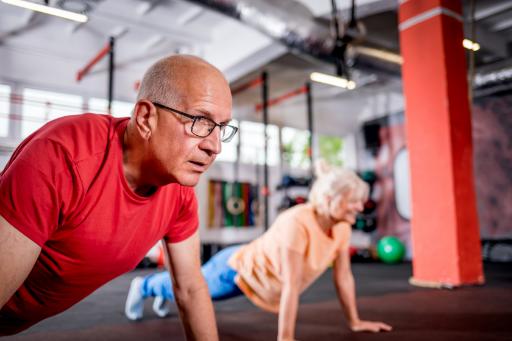
By incorporating HIIT workouts for elderly into your routine, you can reap the numerous benefits it offers, promoting a healthy and active lifestyle well into your golden years. It’s crucial to listen to your body, prioritize safety, and consult a healthcare professional before starting any new exercise program, especially if you have any pre-existing health conditions. With the right approach and modifications, HIIT can be a fun and effective way to stay strong, energetic, and independent well into your senior years.





